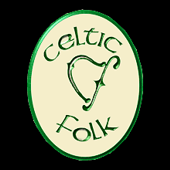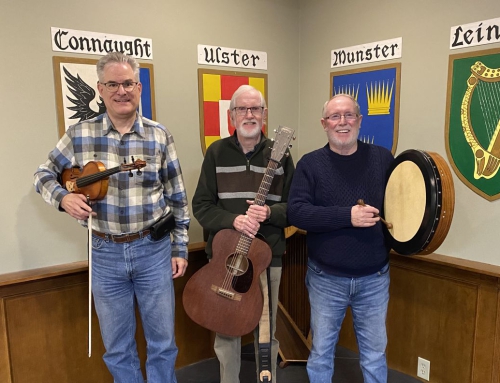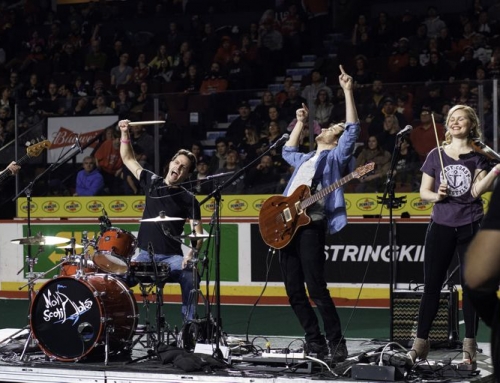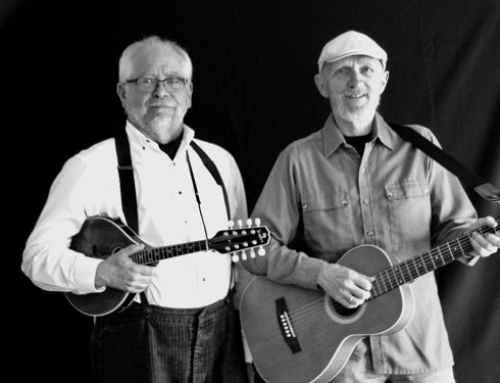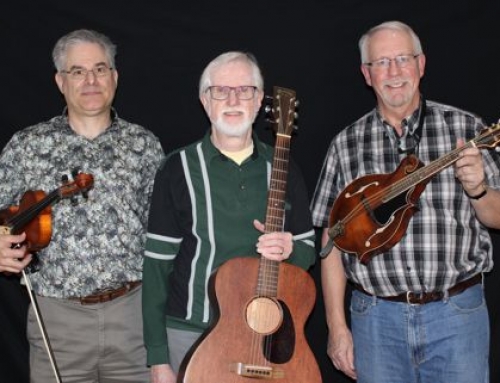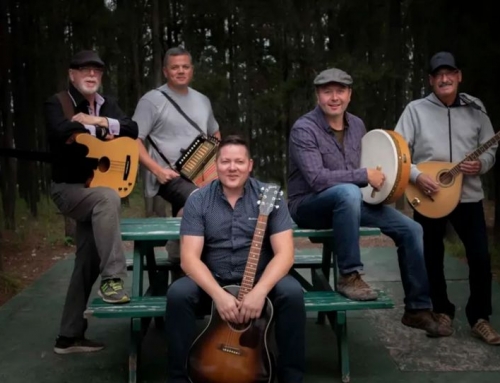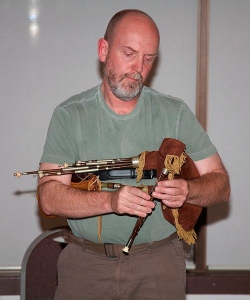 I grew up listening to Scottish and English traditional music, got my first record of Breton music at 13, and it’s been all downhill since then. Started flute when I was 11, guitar and bass soon followed. Began with the Northumbrian pipes about 20 years ago.
I grew up listening to Scottish and English traditional music, got my first record of Breton music at 13, and it’s been all downhill since then. Started flute when I was 11, guitar and bass soon followed. Began with the Northumbrian pipes about 20 years ago.
Ironically, it was at the Northumbrian Pipers gatherings in North Hero, Vermont, that I got my first close up experience with hurdy-gurdies and traditional French music. I acquired my first hurdy-gurdy a few years later, in 2003.
The Border, or Lowland Bagpipe dates back to the late 1600/early 1700’s. Many towns in the border and lowland regions of Scotland had a town piper who played in the morning and for curfew in the evening. The last known town piper died in the early 1800’s and the tradition lost with the militarization of the Big Pipes. The instrument underwent a small revival in the 1920’s when the Northumbrian pipers society had an Edinborough pipemaker make some sets for boy scout troops. In the 1970/80’s a serious revival was undertaken by a few Scottish and Northumbrian players and makers with the main stumbling block being a workable reed. Once this was developed, there has been no looking back (unfortunately, some would say).
The Hurdy-gurdy almost died out in the 1800’s but was kept alive in the villages of central France, as such, the bulk of the traditional repertoire is French dance music although, there is Spanish, Belgian, Italian music, and the Blowzabella revival of the 1980’s reintroduced the instrument in English dance music.
Many players of the Border pipes come from the highland pipes and play that repertoire. There is a large and rich repertoire of music that likely was developed for a border pipe-like instrument and several players such as Hamish Moore, Gordon Mooney and Matt Seattle have done much to research and publish this.
